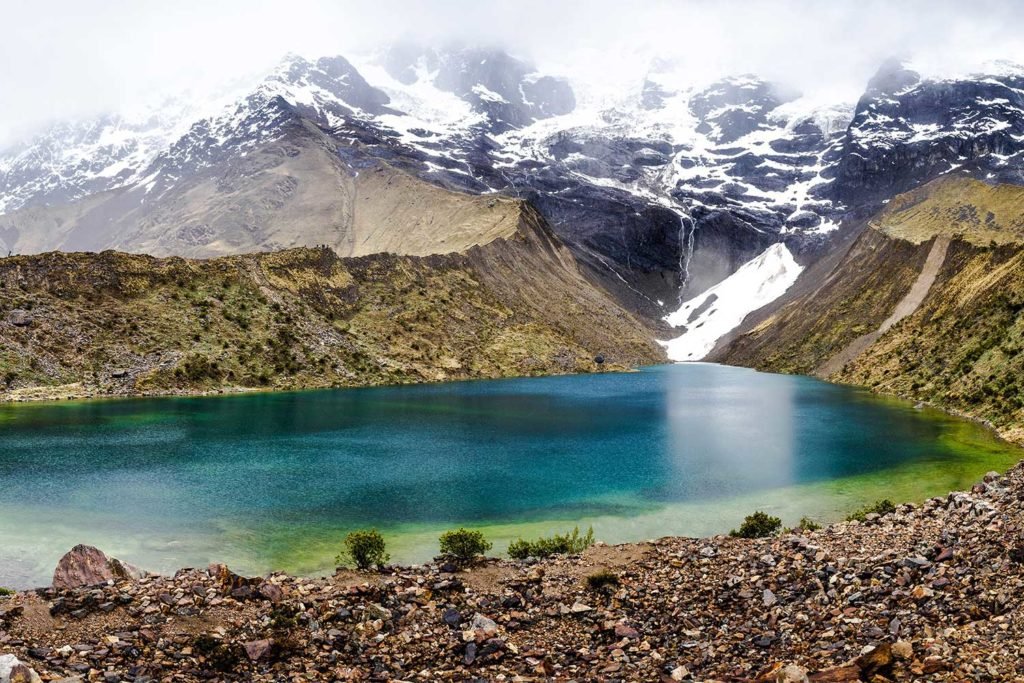Machu Picchu, the emblematic Lost City of the Incas, is undoubtedly one of the most fascinating destinations in the world. Its imposing architecture and its perfect integration with the natural environment have made it a global icon. However, South America hides a much more vast and diverse architectural universe that, like Machu Picchu, captivates those who venture to discover it. In this tour, we will explore some of the Architectural Wonders of South America that have left an indelible mark on the history and culture of the continent.
1. Machu Picchu: The Start of the Adventure
We cannot talk about the Architectural Wonders of South America without starting with Machu Picchu. This majestic Inca citadel is famous for its mystery and stunning location, more than 7,800 feet above sea level. Its structures, built without the use of mortar, speak of advanced architectural techniques. The relationship with the cosmos is evident in every corner, with astronomical alignments that still amaze experts. For travelers, walking its trails, such as the Inca Trail, or witnessing the sunrise over the ruins, is an unforgettable memory of one of the most fascinating Architectural Wonders of South America.

2. City of Cusco, Peru: The Navel of the World
The former capital of the Inca Empire, Cuzco, is another must-see destination for lovers of historic architecture. The city is a living testimony to the fusion of Inca civilizations and Spanish colonial influence, giving rise to a rich architectural heritage. From the imposing Plaza de Armas to the Coricancha Sanctuary, where Inca temples were transformed into convents, Cuzco is a clear example of the Architectural Wonders of South America that intertwine history and modernity in every corner.

3. Rio de Janeiro, Brazil: Christ the Redeemer and the Sambadrome
Rio de Janeiro is another epicenter of South America’s Architectural Wonders. The statue of Christ the Redeemer, one of the most recognized landmarks in the world, stands tall atop Corcovado Mountain. Its majestic Art Deco design symbolizes Brazil’s spiritual and cultural connection to the world. Alongside it, the Sambadrome, designed by architect Oscar Niemeyer, is a striking example of modern architecture, reflecting the joy and dynamism of Carnival. In Rio, the blend of traditional and contemporary architectural styles brings life to a vibrant city that never fails to amaze.

4. Santiago, Chile: The Metropolitan Cathedral and Santa Lucía Hill
At the heart of Santiago, the Metropolitan Cathedral is an example of the impact of Spanish colonization on South American architecture. Its grandeur is complemented by Santa Lucía Hill, a natural viewpoint that offers one of the most stunning views of the city. Santiago is also a hub for modern architecture, where concrete and glass coexist harmoniously with colonial structures. This demonstrates how South America’s Architectural Wonders evolve and transform over time.

5. Bogotá, Colombia: The Primate Cathedral and La Candelaria
Colombia’s capital, Bogotá, is home to some of the region’s most representative structures. The Primate Cathedral, located in Plaza de Bolívar, is one of the oldest and most significant churches in South America. Surrounding it, the La Candelaria neighborhood, with its cobblestone streets and colonial houses, reveals a rich architectural heritage. Bogotá has also embraced contemporary architecture, making the city a testament to the ongoing evolution of South America’s Architectural Wonders.

6. Buenos Aires, Argentina: The Casa Rosada and the Obelisk
In Buenos Aires, the Casa Rosada is one of the most important symbols of Argentine politics. With its neoclassical façade, this building has witnessed some of the most significant moments in the country’s history. The Obelisk, on the other hand, stands as an emblem of the city, representing both modernity and national pride. Buenos Aires exemplifies how South America’s Architectural Wonders reflect cultural diversity and the cosmopolitan spirit of the region.

Additional Sections:
- Pre-Columbian Architecture: Civilizations such as the Incas, Mayas, and Aztecs left behind an invaluable architectural legacy that can still be admired in various parts of South America.
- European Influences: The arrival of Spanish and Portuguese conquerors marked a turning point in the continent’s architectural evolution, blending European elements with native traditions.
- Contemporary Architecture: Renowned South American architects like Oscar Niemeyer and Mario Botta have created works that combine innovation and tradition, leaving a mark on global architecture.
- Sustainable Tourism: Protecting South America’s Architectural Wonders is crucial to ensure that future generations can enjoy these cultural treasures without compromising their integrity.
The Architectural Wonders of South America are a reflection of the history, culture and creativity of this vast continent. From ancient Inca cities to modern metropolises, each of these structures tells a unique story, offering visitors an enriching experience. South America, with its impressive architectural diversity, continues to dazzle the world, defying the passage of time and leaving an indelible mark on those who have the privilege of discovering it.
Frequently Asked Questions

1. How can I get to Machu Picchu?
The most common way to reach Machu Picchu is by train from Cusco to Aguas Calientes, followed by a bus ride to the citadel.
2. What’s the best way to book a tour to Machu Picchu?
You can book a tour to Machu Picchu through local travel agencies or online.
3. Is it safe to travel to Machu Picchu?
Yes, traveling to Machu Picchu is safe. However, it’s recommended to take the usual precautions when visiting a new place.
4. What type of food can I find in Machu Picchu?
In Aguas Calientes and the surrounding areas of Machu Picchu, you’ll find a variety of restaurants offering both Peruvian and international cuisine.
5. What does Machu Picchu mean?
The exact meaning of Machu Picchu is still debated by experts, but it is believed to translate to “Old Mountain” or “Mountain of the Eagle.”
6. Can I bring a backpack to Machu Picchu?
Yes, you can bring a small backpack, but large backpacks must be stored in lockers located at the citadel’s entrance.
7. Are there restrooms available in Machu Picchu?
Yes, restrooms are available at the entrance and in different areas of the citadel.
8. Can I take photos at Machu Picchu?
Yes, you can take photos at Machu Picchu. However, the use of tripods and drones is not allowed.
9. What happens if it rains at Machu Picchu?
If it rains, it’s recommended to bring a raincoat and wear proper footwear. Visits to Machu Picchu can continue, although some areas may become slippery.
10. Can I buy souvenirs at Machu Picchu?
Yes, you can buy souvenirs at the markets in Aguas Calientes and near the entrance to Machu Picchu.
11. What’s the best way to experience Machu Picchu?
The best way to experience Machu Picchu is by visiting with an open mind, ready to marvel at the natural beauty and history of the site.
12. What other archaeological sites can I visit near Machu Picchu?
Near Machu Picchu, you can visit other archaeological sites such as Ollantaytambo, Pisac, and Moray.
13. Can I go trekking at Machu Picchu?
Yes, you can go trekking at Machu Picchu. The Inca Trail is one of the most famous trekking routes in the world.
14. What’s the best way to learn about the history of Machu Picchu?
The best way to learn about the history of Machu Picchu is by hiring a local tour guide.
15. What’s the best way to protect the environment at Machu Picchu?
The best way to protect the environment at Machu Picchu is by following park rules and regulations, not leaving trash behind, and avoiding damage to the ruins.
16. What is the impact of tourism on Machu Picchu?
Tourism has a significant impact on Machu Picchu, both positive and negative. It’s important to find a balance between tourism development and the conservation of the archaeological site.

Would you like to explore South America’s most remote corners with local experts?
With Lorenzo Expeditions, you’ll enjoy an authentic adventure, from the Andes to the Amazon. Connect with nature, embrace local culture, and create unforgettable memories. Book now and discover a new world!





